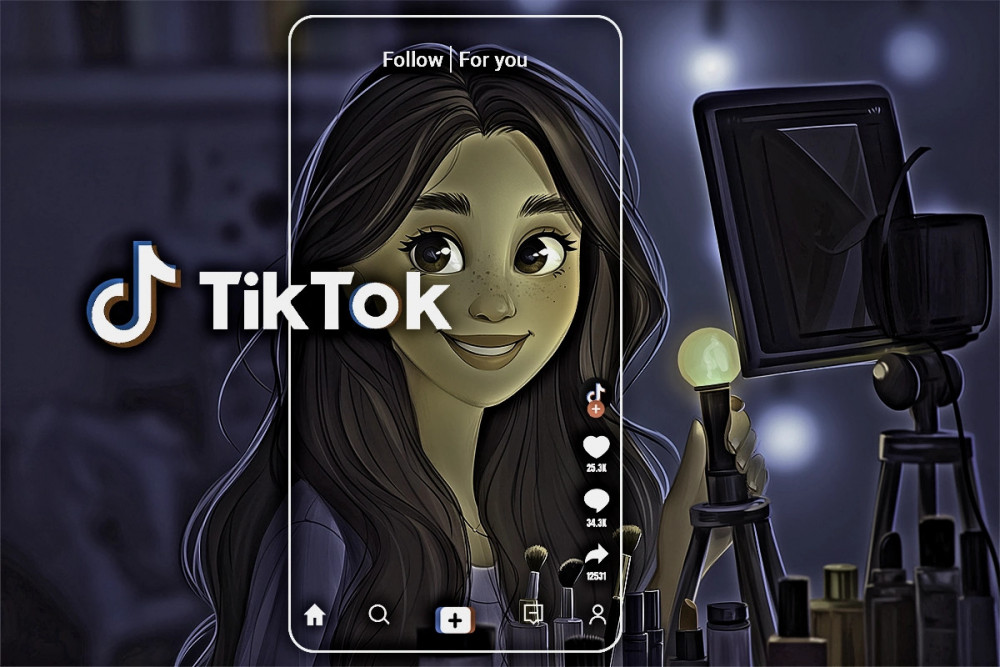How the Spotify Algorithm Enhances Your Listening Experience?

Spotify's algorithm is designed to personalize your listening experience by recommending music based on your preferences. It takes into account various factors like your listening history, playlist interactions, and the popularity of tracks.
Tips to Optimize Visibility and Engagement
By following these tips, you can increase your chances of being discovered on Spotify:
- Create and Maintain Playlists: Regularly update your playlists to keep your followers engaged and attract new listeners.
- Engage with Your Audience: Interact with your listeners through social media and other platforms to build a loyal fan base.
- Promote Your Music: Use various marketing strategies to promote your tracks and increase their reach.
- Collaborate with Other Artists: Collaborations can help you reach a wider audience and gain more visibility.
Start Exploring and Experimenting
Don't wait any longer! Dive into the world of the Spotify algorithm and start experimenting with different strategies to enhance your music experience. The more you explore and adapt, the better your chances of success.
The Growth of Spotify
Over the years, Spotify has become one of the most popular music streaming platforms, with millions of users and an extensive library of tracks. A significant factor contributing to its success is the sophisticated Spotify algorithm.
The Role of the Spotify Algorithm
The Spotify algorithm curates personalized playlists and music recommendations, reshaping how users discover new music and connect with artists. It enhances user experience by intuitively understanding and aligning with their musical tastes and preferences.
How the Algorithm Works
This guide will delve into the workings of the Spotify algorithm, which serves as a cornerstone in the music discovery process. By gaining insights into its operation, both artists and listeners can leverage strategies to maximize its potential and improve their Spotify experience.
Understanding Spotify Algorithm Metrics
Metrics play a crucial role in the Spotify algorithm. Understanding these metrics can help artists and users better navigate the platform:
- Listening History: Tracks the songs you listen to and how frequently you listen to them.
- Playlist Interactions: Monitors how you interact with playlists, including saves, shares, and skips.
- Track Popularity: Measures the popularity of songs across the platform, influencing recommendations.
- User Preferences: Considers your likes, dislikes, and other engagement metrics to tailor recommendations.
Audio Feature Analysis
Spotify’s algorithm meticulously analyzes a song’s audio properties to understand its fundamental characteristics. This analysis includes evaluating several critical elements that define the nature of a track, such as:
- Danceability: Measures a track’s suitability for dancing based on a combination of musical elements.
- Loudness: The intensity of the sound in decibels, contributing to the perceived energy of the song.
- Energy: A perceptual measure of intensity and activity, influenced by dynamics, loudness, and general entropy.
- Valence: Describes the musical positiveness conveyed by a track, with higher valence indicating more positive sounds.
- Tempo: The speed at which a piece of music is played, measured in beats per minute (BPM).
- Acoustics: The extent to which the sound is acoustic versus electronic.
- Instrumentation: Analyzes the types of instruments used in a track.
- Speechiness: Detects the presence of spoken words in a track.
- Beat and Bar Strength: Measures the rhythm’s strength and regularity.
- Duration: The total length of the track.
- Mode: The type of scale from which the track’s melodic content is derived (major or minor).
These metrics enable Spotify’s algorithm to categorize songs into similar groups, facilitating the recommendation of tracks that share musical traits with a user’s previously enjoyed music. By understanding these audio features, Spotify enhances its ability to deliver a more personalized and enjoyable music experience.
Metadata Integration
In addition to audio analysis, Spotify incorporates metadata that provides crucial contextual information about tracks. This includes:
- Release Date: Marks when a track or album was officially made available to the public.
- Label: Refers to the music recording company that releases and promotes the track or album.
- Release Title: The official name given to a track or album at the time of its release.
- Genre: Categorizes music into identifiable styles based on specific characteristics such as instrumentation, rhythm, and harmonic structure.
- Style Tags: Descriptors that provide more specific categorization beyond basic genre labels, identifying unique aspects of music, such as “lo-fi,” “synth-pop,” or “progressive.”
- Mood Tags: Describe a track’s emotional or atmospheric qualities, such as “uplifting,” “melancholic,” or “energetic.”
- Duration: Measures the total length of a track or piece of music, typically in minutes and seconds.
- Key Signature: Indicates the key of the piece by specifying which notes are consistently sharp or flat, setting the tonal foundation.
- Time Signature: Denotes the number of beats in each measure and the note value that represents one beat.
By integrating this metadata, Spotify enhances its ability to deliver highly personalized music recommendations. This approach effectively sorts its vast library into easily navigable segments, excelling in both music discovery and user satisfaction.
Collaborative Filtering
Collaborative filtering is one of the foundational techniques behind Spotify’s recommendation engine. This method collects and analyzes extensive data on user interactions, behaviors, activities, and preferences.
By identifying user patterns and similarities, it predicts what new music a listener might enjoy. For example, if two users have highly overlapping music tastes, tracks liked by one user that the other has not yet heard are recommended.
2. Content-Based Filtering
While collaborative filtering examines relationships between users, content-based filtering focuses on the properties of the music itself. This technique analyzes audio features and metadata of songs to recommend tracks with similar attributes to those the user has liked before.
Examples include:
- Release Radar: Offers users new releases from artists they’ve shown interest in, tailoring recommendations to their existing preferences.
- Daily Mix: Creates algorithmic playlists reflecting the user’s music taste.
- Discover Weekly: Provides personalized playlists based on the user’s listening history and preferences.
3. Natural Language Processing
Natural Language Processing (NLP) allows Spotify’s algorithm to understand and process human language within user data. This includes analyzing text in user-generated content, like playlist titles and song descriptions, as well as external sources such as blogs, articles, and news about music.
By examining how people describe music and the contexts in which songs are discussed, Spotify gains insights into the cultural and emotional resonances of tracks, refining its music recommendations further.
The Outcome: Personalized Listening Experience
These three methods—collaborative filtering, content-based filtering, and natural language processing—enable Spotify to create a highly personalized listening experience. This makes it easy for users to discover music that aligns with their tastes and explore new genres they might love.
1. Upload Music at the Right Time
Timing is crucial when releasing new music on Spotify. Uploading your music at the right time can significantly impact its initial engagement, which sends positive signals to the algorithm.
Consider the following factors when determining the best time to release your tracks:
- Target Audience Activity: Release music when your audience is most active.
- Holidays and Weekends: These times can affect listener availability and mood.
- Genre-Specific Events: Align releases with events related to your genre.
Utilize Spotify's Insights tool to analyze when your tracks get the most listens, helping you choose the optimal release times.
2. Optimize Your Profile
An optimized profile not only informs listeners but also boosts user engagement. Ensure your Spotify artist profile is complete and up-to-date with:
- Biographies: Provide a detailed and engaging bio.
- Photos: Use high-quality, professional images.
- Social Media Links: Connect your profile to your social media accounts.
A well-maintained profile increases your credibility and makes your page more appealing, encouraging longer engagement times which positively influence the algorithm.
3. Create Catchy Artwork
Visual appeal is often the first impression potential listeners have of your music. Eye-catching, professional artwork can significantly impact whether new listeners click on your track.
Effective artwork can boost play rates and follower growth, indirectly influencing how the algorithm rates and recommends your music.
4. Determine Labels for Your Tracks
Labeling your tracks effectively involves more than just naming them. Properly tagging genres, moods, and other metadata helps your music be discovered in relevant searches and playlists.
Accurate and detailed tags help the algorithm understand where your music fits and who might enjoy it, improving your chances of getting recommended to the right audience.








